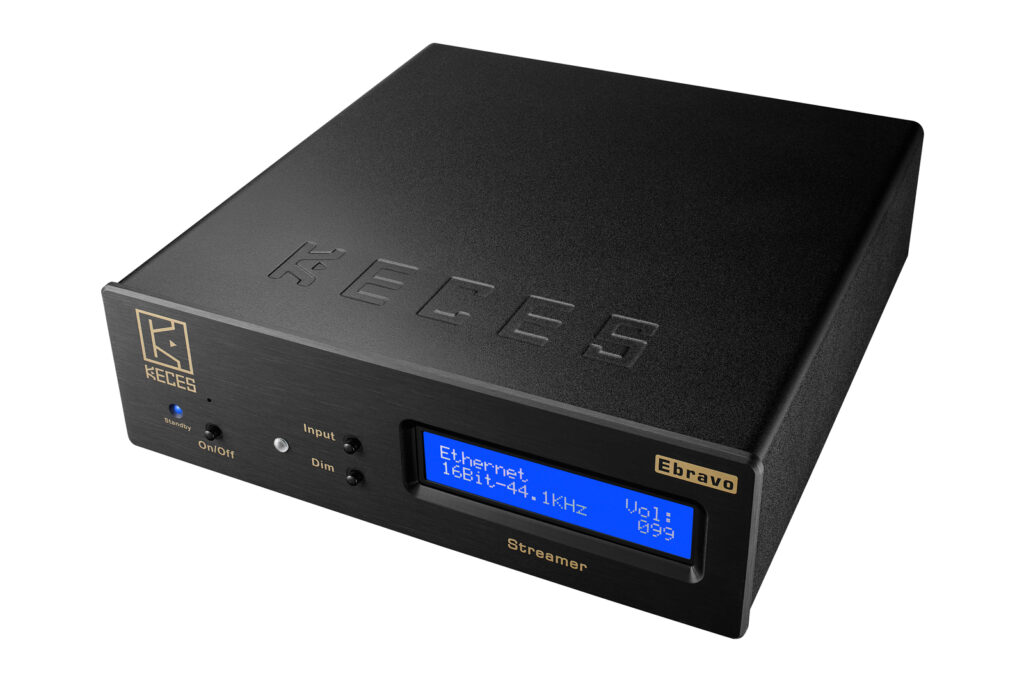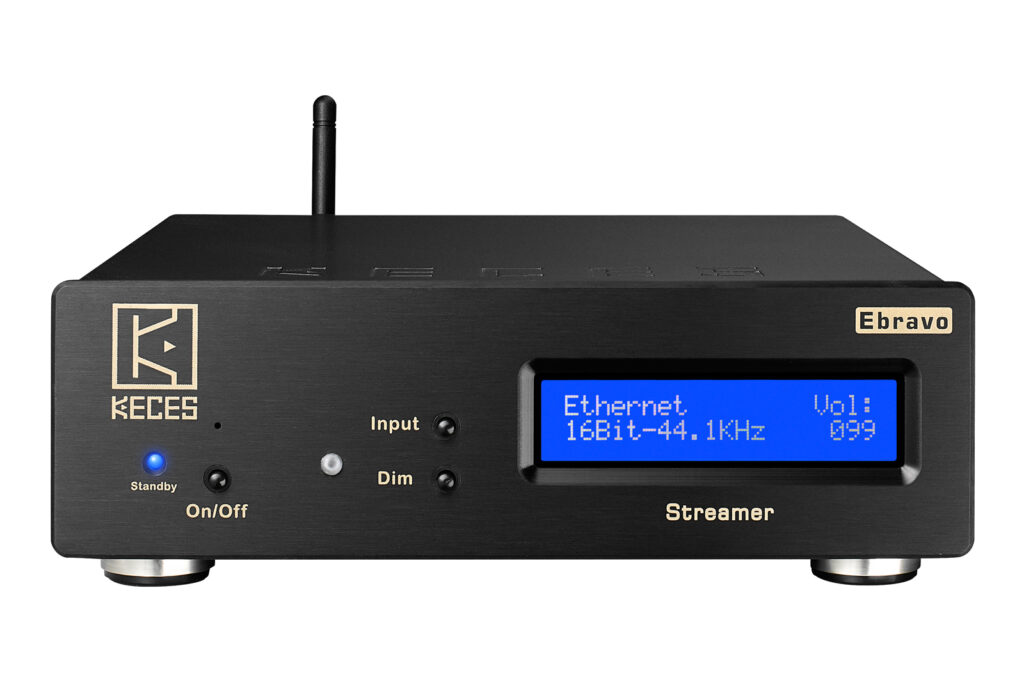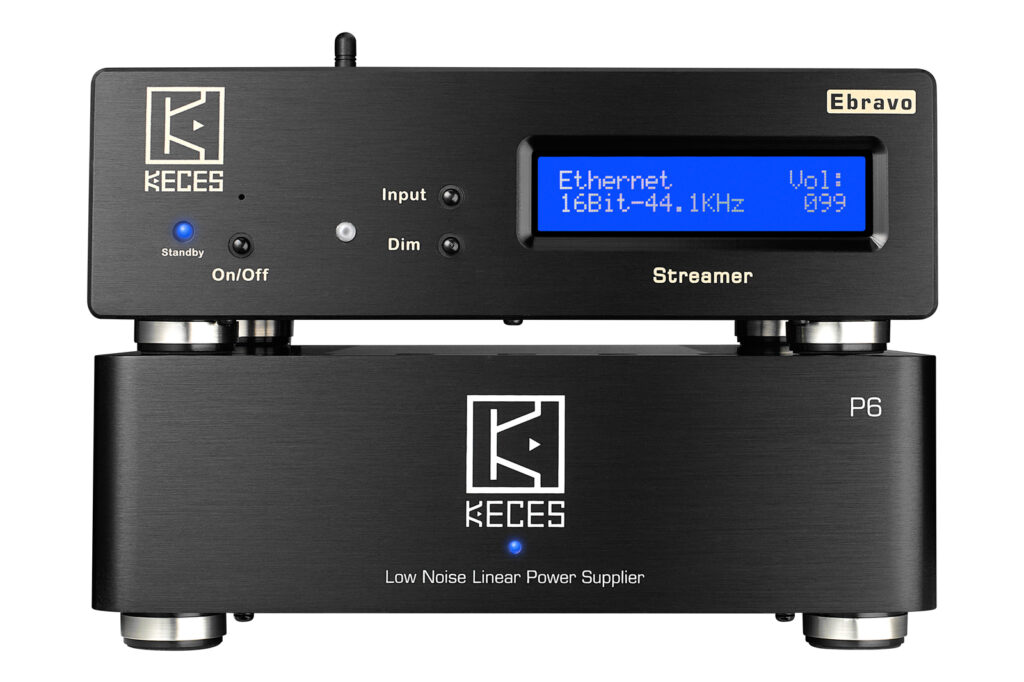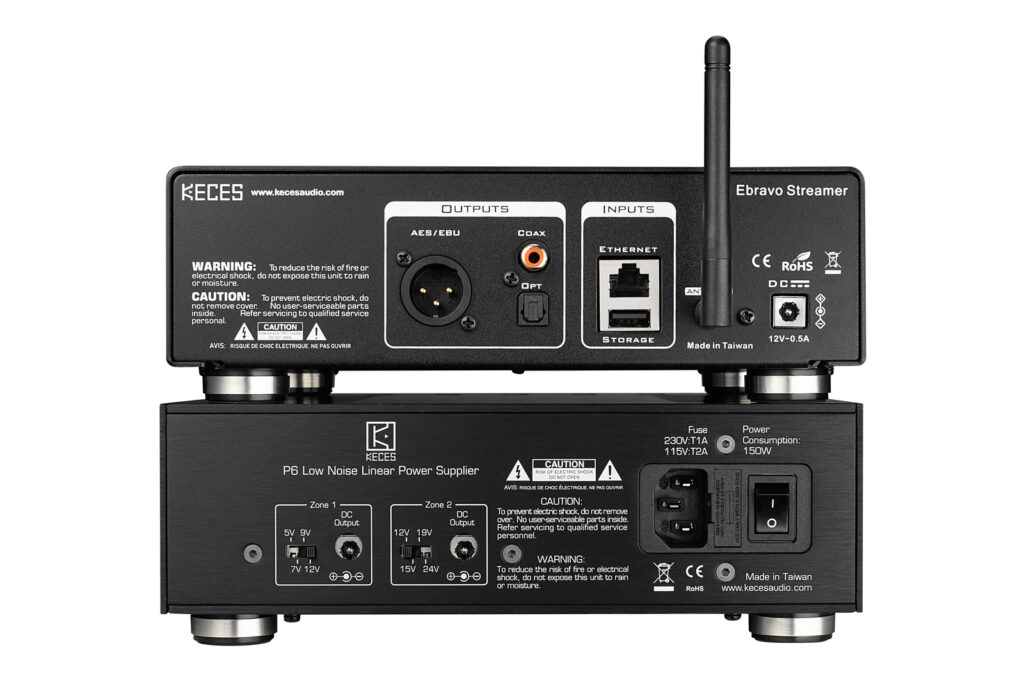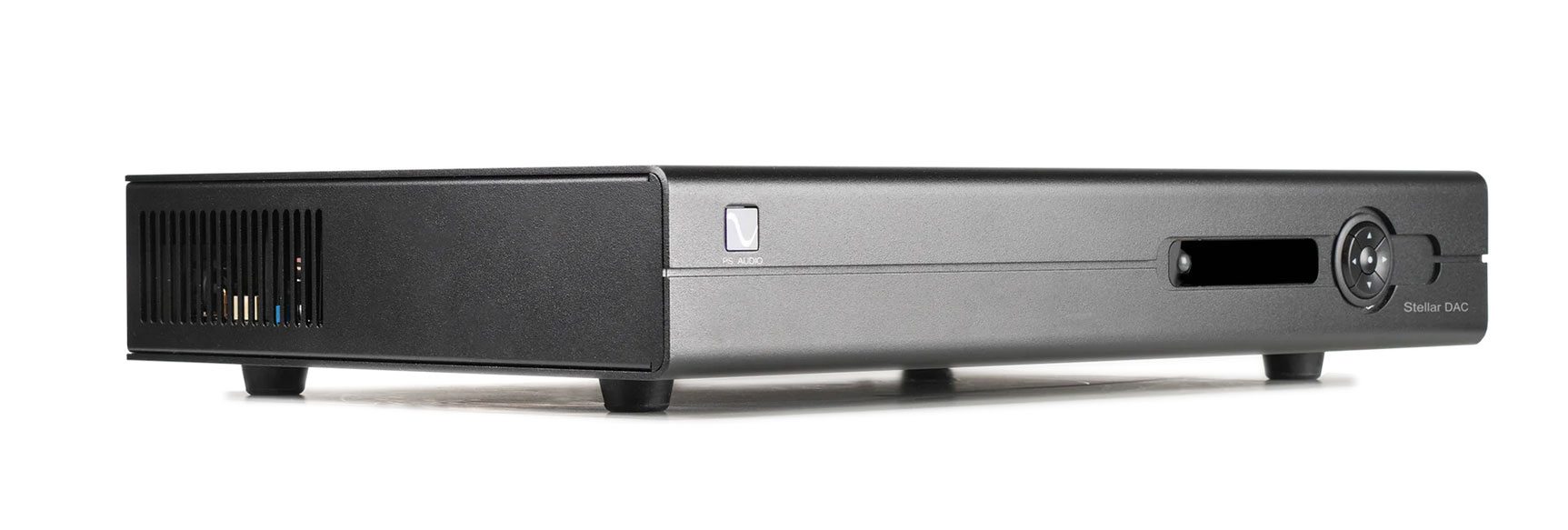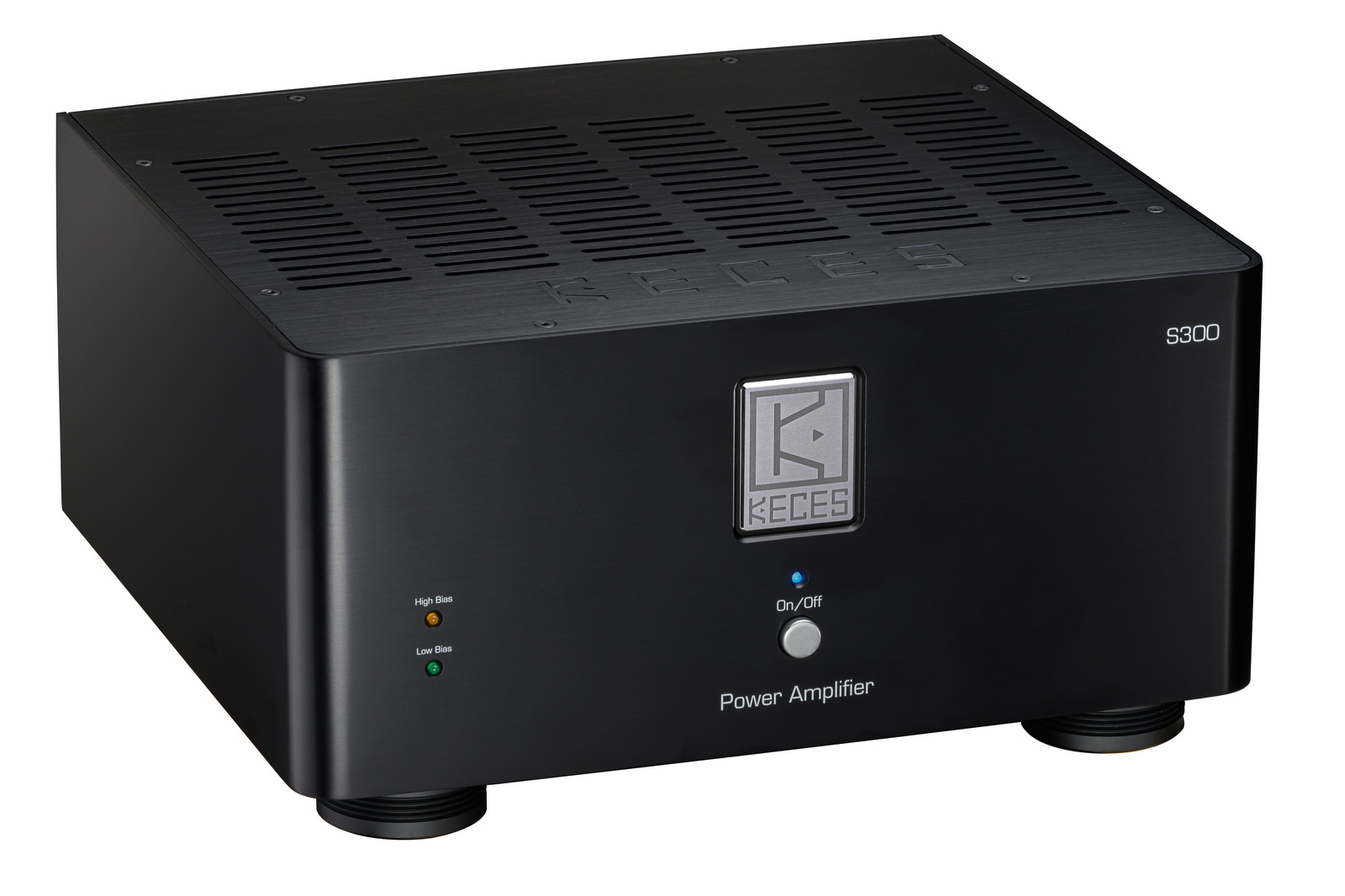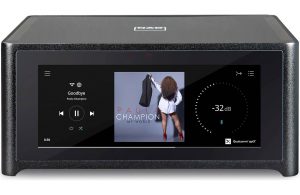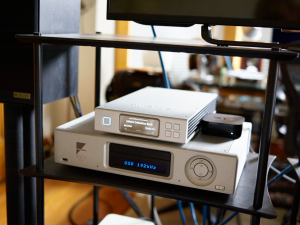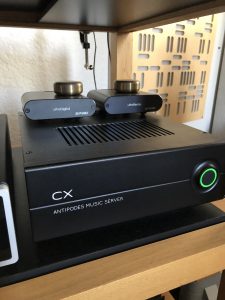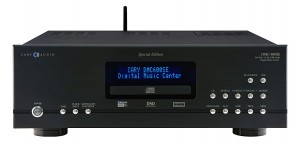Like a god of destruction and rebirth, the internet streamer obliterates the accumulated dross of the audiophile world with one hand, while bestowing untold musical riches with the other. All at no charge. Dump your tables, tubes, and tuners into the ocean. Gift your album caravan to a grateful acolyte who can be dazzled by each treasure with fresh eyes. Unburden your living quarters of the staunch audio racks, straining under the weight of your audio gear monument and glowering at any who would approach unbidden. You don't need any of it. Computer, powered speakers, Qobuz, streaming freedom. More music than even Columbia House could provide, no penny required!
But being an audiophile means never having to say you're satisfied. Nothing is so perfect that a little obsessive tinkering and money can't make it perfect-er.
So, we bring to the streaming world the same attention to details great and small that we give to phono cartridge set up, speaker configuration, and room treatment. No, improvement in sound quality is a minor thing to the cognoscente, right? And if having the galaxy jukebox at your disposal can be enhanced by better sound at a relatively affordable price, why not? Cue, the new Keces Audio Ebravo Streamer Transport.
The Ebravo Streamer Transport arrives in a sturdy shipping box, snugly secured in form-fitting protective cutouts, complete with an included power cord and 12v trigger cord. Weighing in at a little over two pounds, the streamer is compact and reassuringly solid in its chic black steel frame. The overall aesthetic announces that this is a serious audio product, not some portable gewgaw for hipsters to slide into their Baggy Jeans pockets. Keep it on a table or rack with all your grownup audio gear. Running down the specs from the Keces Audio website, know that it's powered by a 2.5mm DC jack and features audio outputs that include Optical 1, Coax 1, AES 1 up to 192kHz/24-bit of Bit-perfect output. It also features a 24-bit with digital optical, coaxial and AES output. It has native streaming for DLNA, Spotify Connect, and TIDAL Connect, and will provide additional streaming utilizing the 4Stream App for Spotify, Deezer, TuneIn, Tidal, Qobuz, among others. You can access it via Bluetooth or Bluetooth 5.1; alternatively, you can use Wi-Fi, offered at 802.11 b/g/n/ac 2.4 GHz and 5 GHz dual bands Wi-Fi. A 10/100M Ethernet port is there for connecting your NAS or local storage to play music files (supported codecs include MP3, AAC, ALAC, APE, FLAC, WAV, WMA, OGG, and AIFF).
At the time of this writing, the Ebravo will set you back $599, (which would buy you almost 2/3 of the Bill Evans - Riverside Recordings Vinyl Box Set). However, streaming that same recording on Qobuz at a fraction of the cost using the Ebravo will require an additional DAC of your own choosing. Which is fine if you already own a DAC, but an additional expense if you don't. And, if you still need amplification, speakers, and a dac, some might argue, why do you need the Ebravo? Silence! Sorry, I mean, silence, as in, the quiet that comes from transporting the streaming process from a jostling, crowded water park to a serene little audio stream, where music may flow along peacefully. Okay, that may be overstating things; like all things audio not named speakers, the effect of the Ebravo is relatively subtle. Longtime PF readers, however, will instantly hear the improvement an Ebravo makes versus a standard computer/DAC combination. Put simply, if you're paying attention to sound quality, I'm pretty sure most people will hear the difference.
My desktop system is a modest little number that consists of a Glow Audio integrated tubed amp, Acoustic Energy AE-100s, and Schiit Bifrost Uber DAC. Connected to the least audiophile HP computer known to man or beast, this hearty system plays all day, nearly every day. It's terrific for new-music hunting and for providing a handy distraction from pressing obligations and worries. It also sounds good enough to capture the attention of visitors, who ask me if this is one of those expensive stereos that I write about. I just smile and nod affirmatively. Not surprisingly, I had little expectation that the Ebravo would have much of an impact on the sound that I was used to hearing, but boy I was wrong.
Freed of the HP computer, with its Medusa head of waving cables, the Bifrost/Ebravo combination elevated the sound in many subtle, but easily recognizable ways. Enriched fullness of tone, improved distinction between instruments, and reduction in background noise are in evidence immediately, but, again, more likely to be discerned by those who actively look for such changes. By eliminating my computer's omnipresent electronic mumble, the Ebravo gives Steven Mayer's masterful performance of American composer Louis Moreau Gottschalk's Reflets du passe', Op. 28 a heightened loveliness and immediacy. How much extra loveliness and immediacy? The answer is, more than enough. There's a reason piano is the favorite instrument for discerning changes in a system. The sound of a mallet hitting a string with enough force to send a low note of incredible richness almost 70 feet is something millions of people have experienced. The tonal character of the piano is practically embedded in our DNA, so it's easy to recognize the sound of a piano changing from one system to another. With this piano recording, the Ebravo seemed to increase the tactile impression of Mayer's fingers delicately caressing each key on the keyboard. Little things, like the interplay of dynamics and phrasing that make this such a moving piece are brought to the fore when the Ebravo is in place. Imagine that you're listening to something very intently in your listening room during the early morning, and you suddenly realize that there was a window open. You don't realize how big a difference it makes until you close it. That's my impression with the Ebravo and the Reflets du passe', Op. 28.
Moving from the desktop system to one that featured the Keces Audio S4 Preamplifier and S300+ amplifier (review forthcoming) only reinforced my initial impression of the Ebravo's value. Professor Longhair's brand of New Orleans Rhythm and Blues piano is the stuff of legend. Absolutely toe-tapping, joyous stuff, and I defy anyone to play one of his recordings and not be smiling broadly by the end of the final note. His piano's sound, however, so perfectly crafted for jolting an audience out of their seats and into a dancing mood in a live setting, can easily sound "tinkly" when playing his recordings in a less than complementary system. My Triangle Antal speakers in my very lively room accentuate anything connected with harshness or brightness. With its Keces Audio stablemates delivering remarkably clean amplification, the Ebravo streamer enabled the remastered version of Professor Longhair's "Big Chief" to convey the body and soul of a true piano. Removing the Ebravo, and using a MacBook Pro as a source, the recording lost depth, substance, and dynamics. The sound without the Ebravo in place wasn't exactly in the toy piano vicinity, but it certainly lacked something.
I had similar results with all manner of instruments and recordings. Things just sounded more coherent, tuneful, and generally more satisfying when the Ebravo was in use, compared to when it was not. Is it because of the decrease in jitter and electronic noise? Keces Audio would have you believe so. All I can say is, throughout the review period, I kept thinking that, based on the improved sound and solid build quality, the Ebravo actually makes a difference…and is seriously under priced. My experience with even my modest systems makes me confident that the Ebravo should be perfectly able to make a positive impact with systems far up the line. In addition, the 4Stream App proved easy to use for streaming and playing music stored locally, and is a welcome exception to many streaming apps. Should you be looking for a way to improve your streaming set up for not too much of a cash outlay, the Ebravo is well worth your attention and audition.
Ebravo Streamer Transport
Retail: $599
Keces




